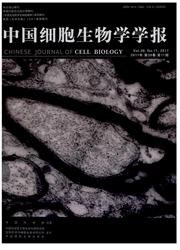

 中文摘要:
中文摘要:
涡虫是动物界最早出现两侧对称、三胚层、营自由爬行生活的动物类群,在动物系统演化中占有重要地位。涡虫再生和抗饥饿能力极强,在再生和饥饿的过程中,通过细胞增殖、分化、自噬、凋亡完成身体的重塑。涡虫作为一种体内研究自噬的新型模式生物,可以替代其他模式生物,克服了只能在特定时间或者特定器官开展工作的困扰,在体内实施动态检测。该文在重点介绍了涡虫与自噬相关的基因以及信号通路研究概况的同时,期望为自噬研究打开一个新视角。
 英文摘要:
英文摘要:
Planarians are the earliest free-living platyhelminthes with triploblast and bilateral-symmetry, and also the important animal group which transits from water-inhabitation to land. It is required to continuous dynamic adjustment of many processes by the way of proliferation, differentiation, autophagy and apoptosis for maintaining the normal homeostatic balance in planarians. Planarians provide a new in vivo model organism to study autophagy and this makes them very different from other models where autophagy only occurs at very specific times and/or in very specific organs. This review aims to provide a general view of planarians as an autophagy model organism, placing more emphasis on those genes and signaling pathways related to autophagy.
 同期刊论文项目
同期刊论文项目
 同项目期刊论文
同项目期刊论文
 CHROMOSOME AND KARYOTYPE ANALYSIS OF POLYCELIS WUTAISHANICA (TURBELLARIA,TRICLADIDA) FROM SHANXI PRO
CHROMOSOME AND KARYOTYPE ANALYSIS OF POLYCELIS WUTAISHANICA (TURBELLARIA,TRICLADIDA) FROM SHANXI PRO Study on phylogenetic relationship of freshwater planarians(Turbellaria:Tricladida:Paludicola)in nin
Study on phylogenetic relationship of freshwater planarians(Turbellaria:Tricladida:Paludicola)in nin TOXICITY OF IONIC LIQUID 1-OCTYL-3-METHYLIMIDAZOLIUM BROMIDE ON FRESHWATER PLANARIAN, DUGESIA JAPONI
TOXICITY OF IONIC LIQUID 1-OCTYL-3-METHYLIMIDAZOLIUM BROMIDE ON FRESHWATER PLANARIAN, DUGESIA JAPONI Molecular characterization of the glucose-regulated protein 78 (GRP78) gene in planarian Dugesia jap
Molecular characterization of the glucose-regulated protein 78 (GRP78) gene in planarian Dugesia jap Toxic effects of 1-octyl-3-methylimidazolium bromide ionic liquid on the anti-oxidant defense system
Toxic effects of 1-octyl-3-methylimidazolium bromide ionic liquid on the anti-oxidant defense system Toxicity of Ionic Liquid 1-octyl-3- methylimidazolium Bromide on Freshwater Planarian, Dugesia japon
Toxicity of Ionic Liquid 1-octyl-3- methylimidazolium Bromide on Freshwater Planarian, Dugesia japon Changes of alkaline phosphatase activity in response to different stressors in planarian Dugesia jap
Changes of alkaline phosphatase activity in response to different stressors in planarian Dugesia jap cDNA cloning of heat shock protein 90 gene and protein expression pattern in response to heavy metal
cDNA cloning of heat shock protein 90 gene and protein expression pattern in response to heavy metal 期刊信息
期刊信息
